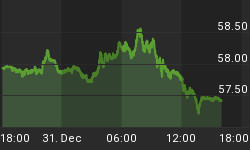Rollover risk can be defined broadly as the possibility that a borrower cannot refinance maturing debt. If combined with insufficient funds/liquid assets on hand to fund the shortfall, the borrower will experience a liquidity problem and technically may be considered insolvent.
Here is a concrete example of rollover risk that may be unfolding right in front of us: Bloomberg estimates that the developed economies have $7.6 trillion of debt maturing in 2012 led by Japan ($3 trillion) and the U.S. ($2.8 trillion) and more than $8 trillion must be financed when interest payments are included. By 2015 it is estimated that half of the debt of the top 10 global debtors ($15 trillion) will mature and must be rolled.
Debt Maturing in 2012 ($)
Japan - 3,000 billion
US - 2,783 billion
Italy - 428 billion
France - 367 billion
Germany - 285 billion
Canada - 221 billion
Brazil - 169 billion
U.K. - 165 billion
China - 121 billion
India - 57 billion
Russia - 13 billion
Cumulative Debt Maturing out to 2015
Considering that global GDP is estimated at $70 trillion the magnitude of these numbers beg the questions of 1) how this will be financed and perhaps more importantly 2) at what rates?
Other than the US bond market which seems well bid for now (at least by the Federal Reserve), private lenders are retreating from peripheral markets at the first hint of trouble. If this continues, either the monetary authorities will have to step in and monetise the maturing debts or interest rates will have to rise considerably from current historic lows. We are seeing the outcome of this process taking place on a relatively modest scale in Spain and Greece - what will it look like when it goes global?
Sadly, as the political class has become aware of the rollover issue, rather than take any productive steps to address their debt addiction, they have partnered with the central banks to attempt to keep interest rates suppressed for an extended period - hoping this will allow business as usual to continue. Politicians want to continue to run deficits and central banks do not want "too big to fail" financial institutions to suffer losses on their loan portfolios. What both parties have yet to learn is that you can control interest rates or the purchasing power of money, but not both indefinitely. I am confident that the law of unintended consequences will be sure to provide that instruction in due course.
















